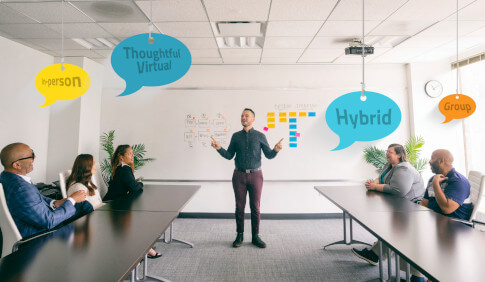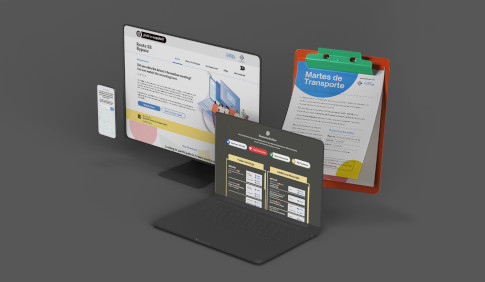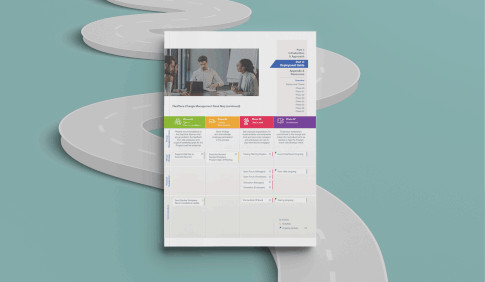I’ve always enjoyed the outcomes made possible by a well-facilitated meeting – helping groups come together, breaking down barriers, and realizing what they can achieve when working together. This has always been a highlight of my work at The Clearing.
Going into 2020, I was looking forward to a full slate of opportunities facilitating meetings for clients working on a range of topics. It goes without saying, but that didn’t exactly go according to plan. So, I pivoted – and worked to apply everything I had learned over a decade of in-person facilitation to ensure our clients got just as much out of their now virtual sessions as if the sessions were in-person.
Here’s how I approach virtual meetings to drive participation and support the group’s outcomes.
Pro-Tip #1: Gain Role Clarity in Advance of the Meeting
Getting clear on the roles of the facilitators and the participants before the meeting helps to eliminate confusion during the meeting helps the group stay on track toward desired outcomes. Part of this is ensuring participants are prepared to participate. It’s distracting when folks show up not ready to engage in the right way – and this can be the downfall of a productive session.
What To Do
- Set and distribute your agenda ahead of time, and think through roles and responsibilities for each part
- Send a level-setting email in advance to set participants’ expectations and desired outcomes for the meeting
- Ensure employees know it’s a camera on meeting (or camera off)
- Let folks know if there are meeting pre-reads or pre-work
Pro-Tip #2: Identify a Facilitation Partner
You don’t have to manage the meeting alone! When possible, engage a facilitation partner in advance of the meeting.
What To Do
- Nominate a team member (or team members) to be responsible for note-taking and technology, including monitoring the technology before and during the meeting. Ensuring you have support during the meeting allows the main facilitator to stay focused vs. worrying about managing the slides, or helping folks connect to the technology, etc. It’s too difficult to hold both facets of a meeting with the additional factors in play during a virtual session, so engage a partner to help.
- Take a look at our Process Content PRIME for more on this concept.
Pro-Tip #3: Practice Active Listening
Successful facilitation is about listening and being agile – driving and adjusting the conversation for participants. And remember, listening means watching for nonverbal cues as well. It’s harder to see those cues when you are not physically in a room together, so find ways to leverage the virtual technology to stay in touch with participants.
What To Do
- Pay attention to the video and chat functions – these features can give you leading indicators for when to pivot. For example, haven’t heard from a key participant in a while? Ask the right question to draw them back in. Has the room gone silent? It may be time for a quick break.
- Use the buddy system! Enlist your facilitation partners to help you keep tabs on the action and alert you to issues in the private chat. Speaking of buddies, it helps to work with other workplace experts to trade tips – like my colleague Kelly Barlow, who recently shared advice on getting the most of out of hybrid meetings.
The Clearing has a number of additional resources available to help you keep your virtual meetings on track, including our Virtual Facilitation Toolkit. And if you have questions or additional tips on facilitating successful virtual meetings, I’d love to chat – just send me an email at Rebecca.Gaynor@dev2021.theclearing.com.





